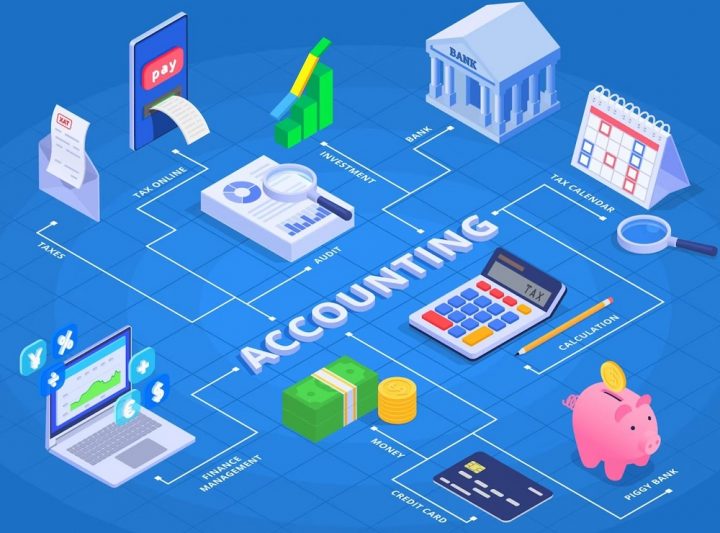In today’s business environment, having an automated accounting solution is the key to success and can save companies a great deal of time and effort. Automated systems are designed to streamline accounting tasks, such as invoicing, tracking expenses, and managing inventory. However, setting up sales/purchase articles or products within an automated accounting solution can be challenging, especially for non-specialists unfamiliar with the software. 4pointzero are able to integrate software into your business such as this and one of our unique selling points is that we offer support during and after implementation. We will be able to assist with setting up sales articles and share best practices so that you get the best results from the start.
Firstly, it is essential to understand what articles or products are, their purpose and why they are important. Articles are pre-defined product or service items that a business sells to its customers. They could be physical products, such as electronics, clothing, or office supplies, or they could be intangible services, such as consulting, software development, or marketing. These articles are typically used to generate sales invoices, purchase orders, and other sales-related documents. Sales articles are the backbone of a company’s revenue, and they need to be managed carefully to ensure accurate reporting and accounting. Furthermore, by implementing 4pointzero’s accounting automation solutions, your sales articles can be created and maintained in a single location, making it easy for you to manage your sales and purchasing processes efficiently.
To set up sales articles within our automated accounting software you need to follow certain steps. 4pointzero’s team of experts appreciate that this may initially appear a daunting task, but be reassured we will be with you every step of the way to make it an easy journey. The first stage is to create a sales article list, which includes all the items or services that your business sells. This list should be comprehensive and up-to-date, and it should include detailed descriptions of each item or service, the cost price, and the selling price. It is also useful to include a unique product code or SKU (stock keeping unit) for each sales article to help you track inventory levels and sales. The automated bookkeeping software that we provide also has the expert functionality to import existing lists of sales articles for a smooth transition.
One important aspect to consider when setting up sales articles is your pricing strategy. This will ensure that the correct price is applied to each item when it is sold. It is important to consider factors such as production costs, market demand and competition when determining prices for your products or services. Once you have determined your pricing strategy, you can input these prices into 4pointzero’s accounting solutions.
In addition to setting up individual products or services, it is also important to consider bundling options. Bundling refers to grouping multiple items together into one package at a discounted price. This can be a great way to incentivise customers to purchase more than one item at a time while also increasing overall revenue. With 4pointzero’s integrated financial solutions you have the flexibility to set up different pricing tiers and discounts for different customers or product categories as well.
To make it easy to identify and retrieve sales articles, 4pointzero’s integrated solutions allow you to assign a unique code to each item. This code should be short, memorable, and easy to understand. It can be a combination of letters and numbers or simply a unique number assigned to each sales article. Categorising sales articles can make it easier to manage them and they can be categorised by product type, supplier, or customer. This can be helpful when generating sales reports or analysing sales data.
Another important consideration when setting up sales articles is inventory management. If you sell physical goods, it is important to keep track of inventory levels so that you do not oversell or run out of stock unexpectedly. 4pointzero’s accounting solutions allow for easy tracking of inventory levels so that you can quickly update them as needed.
Additionally, you will need to set up a chart of accounts, which is a list of all the accounts that your business uses to record financial transactions. It includes accounts for assets, liabilities, equity, income, and expenses. To set up sales articles within our accounting solutions, you need to create accounts for revenue and cost of goods sold (COGS), which 4pointzero can help you with. Revenue accounts are used to record the sales of your products or services, while COGS accounts are used to record the cost of producing or purchasing the items that you sell.
Depending on your business location and the products or services you sell, you may need to charge sales tax on your sales. To set up sales tax rates within our accounting solutions, you need to create tax codes and assign them to the appropriate sales articles. This ensures that the correct tax is applied to each sale, and that the system automatically calculates the tax amount and adds it to the invoice.
Once you have set up your sales article list, chart of accounts, and sales tax rates, you can start creating invoices. Invoices are documents that you send to your customers to request payment for the products or services that you have sold to them. To create an invoice, you need to select the sales articles that you have sold, enter the quantity and price, and add any applicable sales tax. 4pointzero’s integrated software will then automatically calculate the total amount due and generate an invoice that you can send to your customer. These items can also be driven by operational systems if you have these separate to your finance system. We will ensure all the coding is aligned so all items will reconcile.
When your customers pay their invoices, you need to record the payments within our accounting automation software. This ensures that your accounts receivable (the amount of money that your customers owe you) is up-to-date and that you can accurately track your cash flow. To record payments, you need to select the invoice that has been paid, enter the amount received, and allocate the payment to the appropriate revenue account.
Finally, to ensure that your business is running smoothly and that you are making a profit, you need to generate regular reports. The reports that 4pointzero’s accounting software generates include information on your sales, revenue, expenses, and profits, as well as any outstanding invoices and payments. By reviewing these reports regularly, you can identify any issues or opportunities for improvement and make informed business decisions.
Maintaining sales articles is an ongoing process, so your business should review and update its sales articles regularly to ensure that they are accurate and up to date. This includes updating pricing, adding new products or services, and removing discontinued items.
In conclusion, setting up sales articles within a single automated accounting system can be a simple and effective way to manage sales processes. By following these steps with 4pointzero your business can create, categorise, and maintain sales articles efficiently. This can help your business streamline their sales processes, reduce errors, and save time and money. Through working in partnership with 4pointzero, you can make sure that you have the right accounting solutions in place, making it easier for you to focus on growing your business and increasing profitability.
Frequently Asked Questions (FAQ)
Automated accounting solution refer to software or systems that streamline and automate various accounting processes. These solutions leverage technology to perform tasks such as data entry, transaction recording, financial analysis, and reporting, reducing the need for manual intervention.
Is it possible to automate accounting?
Yes, automation has made significant advancements in accounting. With the use of accounting software and technology, many manual tasks such as data entry, reconciliation, and reporting can be automated, saving time, reducing errors, and improving overall efficiency in the accounting process.
Can automated accounting solutions integrate with other software or systems?
Yes, many automated accounting solutions offer integration capabilities with other software or systems. Integration allows seamless data transfer between different platforms, such as customer relationship management (CRM) systems, enterprise resource planning (ERP) software, payroll systems, and banking applications. This integration ensures that financial data remains consistent across various systems and reduces manual data entry efforts.
How does an automated accounting solution work?
Automated accounting solutions leverage artificial intelligence and machine learning algorithms to process financial data and perform tasks traditionally done manually. These solutions can automatically capture and categorize expenses, generate invoices, reconcile accounts, and produce financial reports. By connecting to bank accounts and integrating with other software, they can gather data seamlessly and provide real-time insights into a company’s financial health.
What are the benefits of using an automated accounting solution?
Using an automated accounting solution offers several advantages. Firstly, it reduces human error by automating data entry and calculation processes, ensuring accurate financial records. Secondly, it saves time by eliminating manual tasks, allowing businesses to focus on strategic activities. Additionally, automated accounting solutions provide better visibility into financial data, enabling informed decision-making. They also facilitate compliance with tax regulations and improve collaboration by enabling secure data sharing between stakeholders.
How scalable are automated accounting solutions?
Automated accounting solutions are highly scalable and can accommodate businesses of various sizes. Whether you run a small startup or a large enterprise, these solutions can scale up or down to meet your needs. They can handle increasing transaction volumes, adapt to evolving business requirements, and support the growth of your organization. As your business expands, automated accounting solutions provide the flexibility to accommodate higher data volumes and more complex financial processes.



